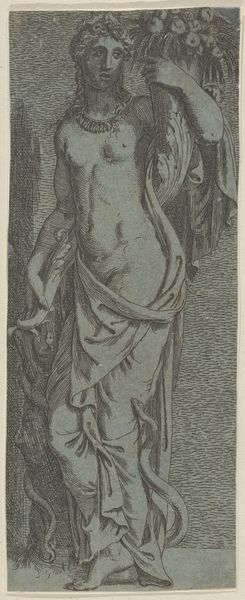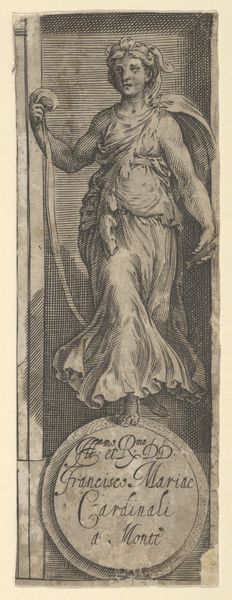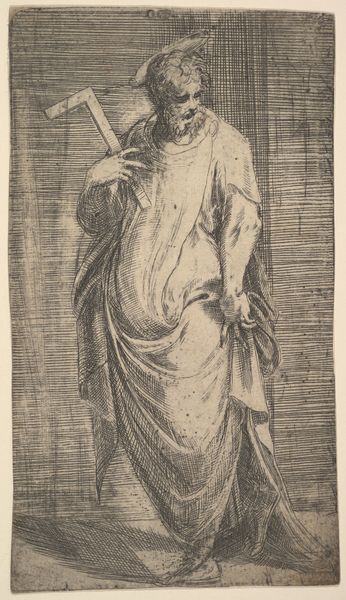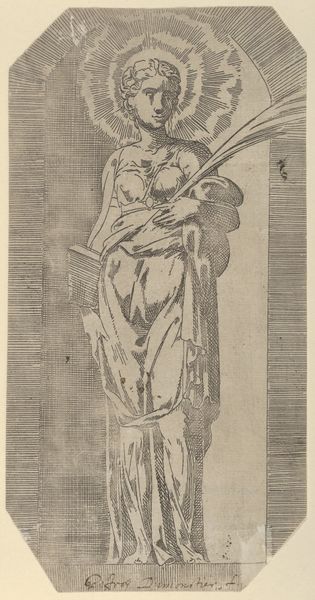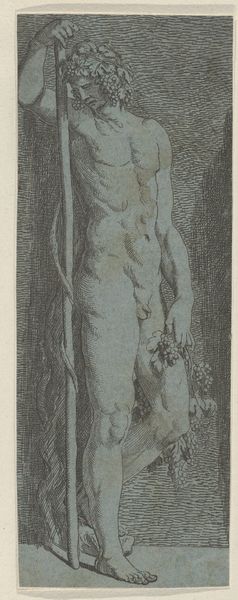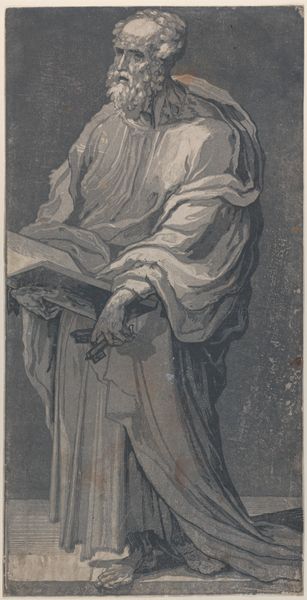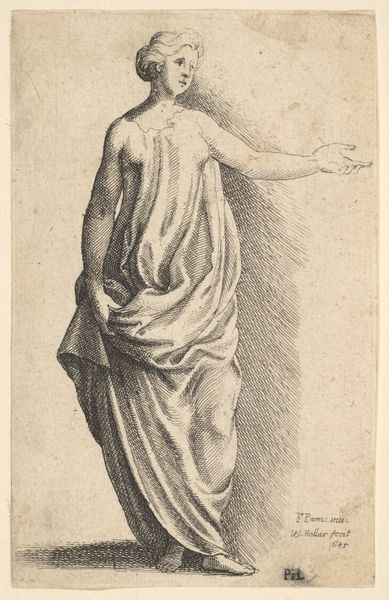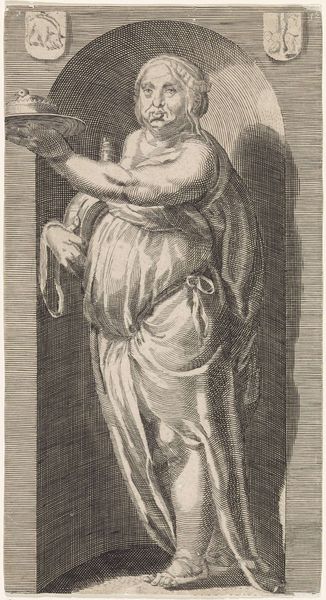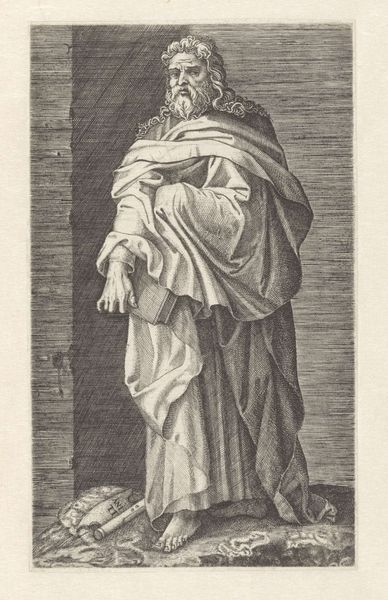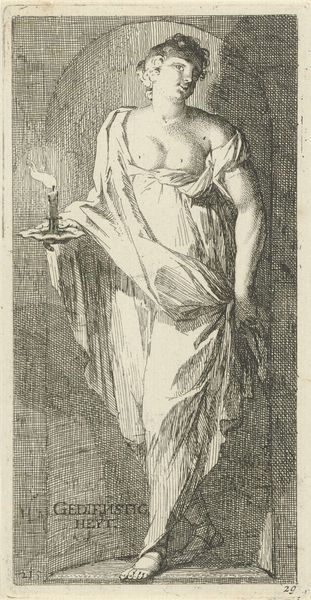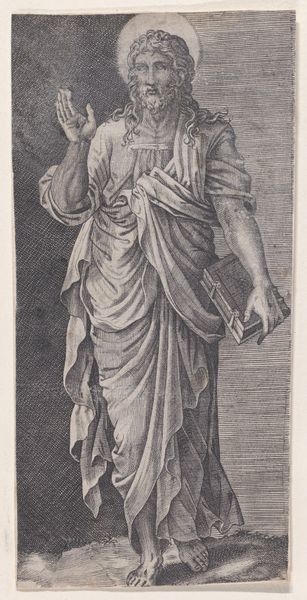
drawing, print, engraving
#
drawing
#
allegory
# print
#
figuration
#
history-painting
#
italian-renaissance
#
nude
#
engraving
Dimensions: Sheet: 9 1/4 × 3 3/8 in. (23.5 × 8.6 cm)
Copyright: Public Domain
Editor: This is Battista Angolo del Moro's engraving, "Spring," created sometime between 1530 and 1573. The figure's draping feels classical, almost like a statue, but also static. How would you interpret this work, thinking about its context? Curator: Well, this image speaks volumes about the complexities of the Italian Renaissance. "Spring," rendered through the cool detachment of engraving, embodies so much more than just a season. Consider the allegorical female figure – the partially nude body, the drapery, and the cornucopia. What do these elements signify within a patriarchal society? Editor: Fertility and abundance? Curator: Yes, but through whose gaze? Is it an empowering representation of feminine strength, or does it reinforce the objectification of women, reducing them to symbols of reproductive potential? Look at how her gaze is averted, directed away. What statement is the artist trying to make? Editor: Maybe she is representing a kind of resistance to that objectification? Curator: Exactly! Let’s also consider the socio-political landscape of the time. Italy was fragmented, plagued by warfare and political intrigue. Allegories like this could subtly reflect or critique the instability. "Spring" offers a space to analyze power structures, gender roles, and the artist's own position within it all. Editor: I hadn't thought about it that way. Seeing it as more than just a representation of springtime opens up a whole new level of understanding. Curator: Indeed. By engaging with the art through historical and critical lenses, we reveal its nuanced dialogue with the past, and importantly, with our present.
Comments
No comments
Be the first to comment and join the conversation on the ultimate creative platform.
